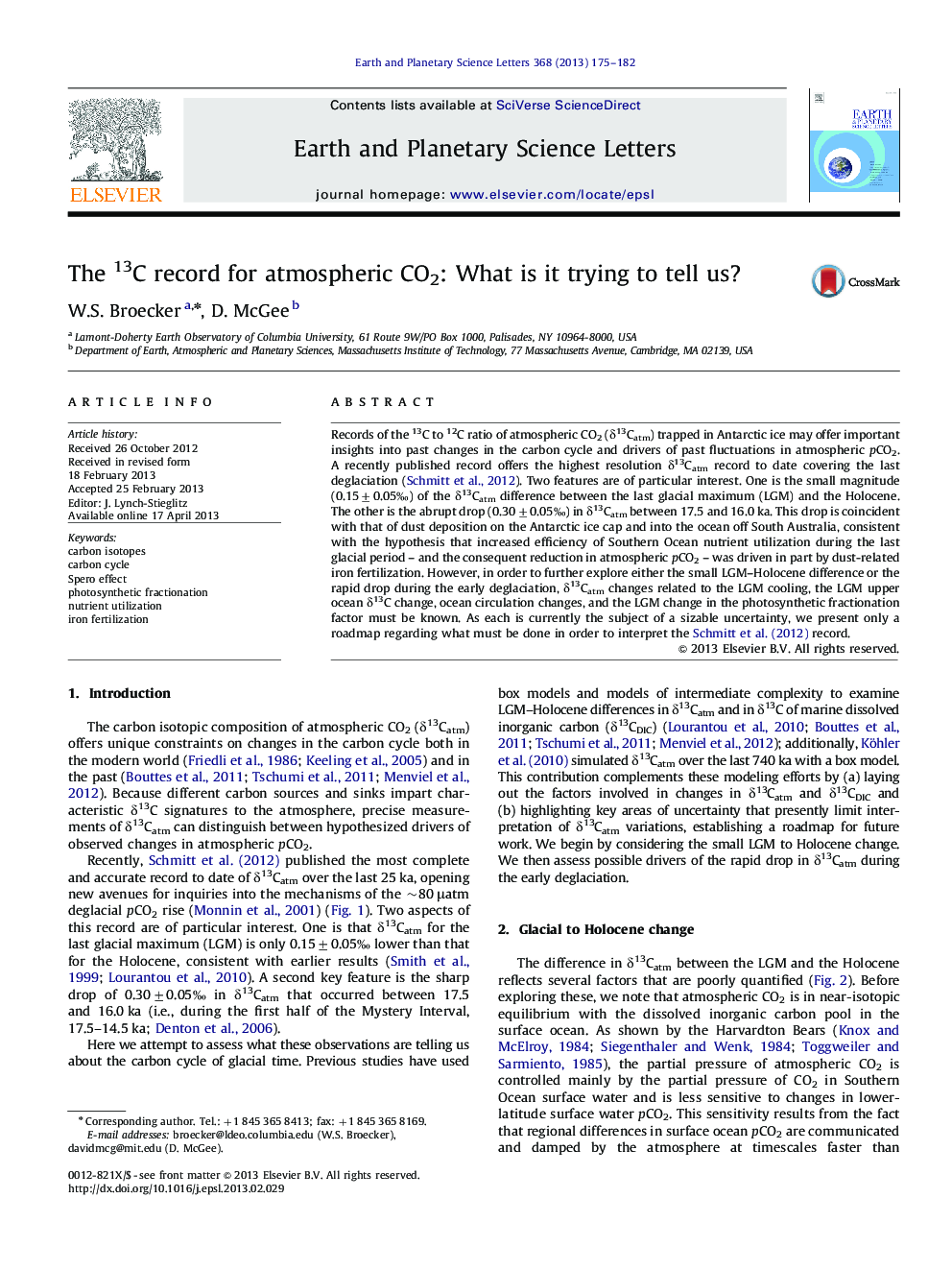| Article ID | Journal | Published Year | Pages | File Type |
|---|---|---|---|---|
| 6430324 | Earth and Planetary Science Letters | 2013 | 8 Pages |
Records of the 13C to 12C ratio of atmospheric CO2 (δ13Catm) trapped in Antarctic ice may offer important insights into past changes in the carbon cycle and drivers of past fluctuations in atmospheric pCO2. A recently published record offers the highest resolution δ13Catm record to date covering the last deglaciation (Schmitt et al., 2012). Two features are of particular interest. One is the small magnitude (0.15±0.05â°) of the δ13Catm difference between the last glacial maximum (LGM) and the Holocene. The other is the abrupt drop (0.30±0.05â°) in δ13Catm between 17.5 and 16.0 ka. This drop is coincident with that of dust deposition on the Antarctic ice cap and into the ocean off South Australia, consistent with the hypothesis that increased efficiency of Southern Ocean nutrient utilization during the last glacial period - and the consequent reduction in atmospheric pCO2 - was driven in part by dust-related iron fertilization. However, in order to further explore either the small LGM-Holocene difference or the rapid drop during the early deglaciation, δ13Catm changes related to the LGM cooling, the LGM upper ocean δ13C change, ocean circulation changes, and the LGM change in the photosynthetic fractionation factor must be known. As each is currently the subject of a sizable uncertainty, we present only a roadmap regarding what must be done in order to interpret the Schmitt et al. (2012) record.
⺠We outline factors influencing LGM-to-Holocene changes in the δ13C of CO2. ⺠Multiple poorly quantified factors make it difficult to interpret deglacial δ13C changes. ⺠Drop at 17.5-16 ka matches timing of decline in Southern Ocean dust deposition. ⺠We present a roadmap for future research into changes in δ13C of atmospheric CO2.
